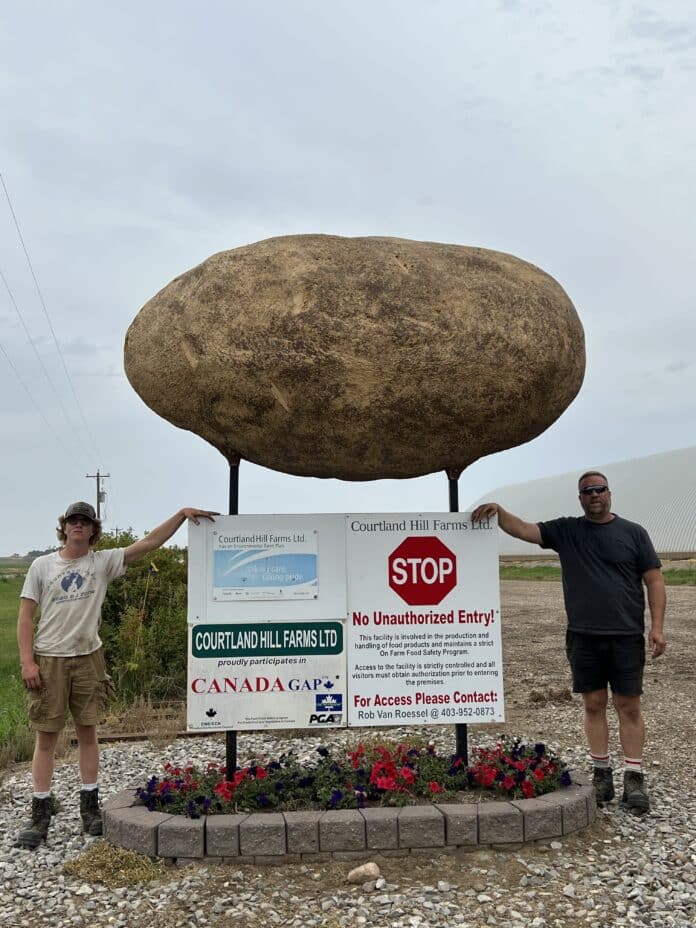We started focusing on expanding our potato crop rotation about five years ago. We had been attending a lot of agronomy meetings, and at these meetings we kept hearing about the issues our fellow potato growers were having with potato early die complex. It seemed some of these issues were related to tight rotations. Our focus has always been on growing potatoes long term, so it was a no brainer for us to look into growing spuds on a wider rotation for longer term sustainability.
While we haven’t had any major disease or pest issues on Courtland Hill Farms in Bow Island, Alta., we knew that to keep our field disease free, we needed to do more. First, we looked at acquiring more land to farm. We did this by reaching out to neighbours and arranging for land swaps. Once we had enough land, we then started planning the rotation — five years at minimum with four crops growing in the fields between potato production. In theory, I know where my potatoes are going to be planted in 2028.
For rotational crops, we grow durum, spring wheat, alfalfa, and peas — this doesn’t count the dry beans and seed canola grown by our neighbours during field swap years. While we are on a five-year plus rotation, we want to move to being on a six-year rotation for all our spud fields. Through our land swap agreements with neighbours, we now have our crop rotation plans formalized.
All our fields are irrigated. We have been experimenting with variable rate irrigation by testing out different watering levels and variable rate application of inputs also. We’re still working to find what crops should be planted before and after potatoes. As far as future regenerative agriculture practices that I want to try, I’m looking to add more cover crop options in the window before the spud crop and post-harvest.
Our rotation isn’t just focused on the crops we grow. We also have a 200-cow calf beef herd. We haven’t always raised livestock, but when a neighbour we were renting from wanted to retire, we took over management of his cattle herd. The livestock has given us opportunities to try out regenerative agriculture practices such as relay cropping for fall grazing with the cows.
I had always heard people speaking about a wider crop rotation as a good thing — the wider the rotation the better. At Courtland Hill Farms, we’ve always been willing to try new practices for the good of our land. We’ve been doing direct seeding for over 20 years depending on the crop growing in the field that year. We’re still learning, though, when it comes to regenerative agriculture and are always willing to listen to what other growers are doing.
We haven’t noticed any huge benefits yet. Our goal is to maintain yields and crop health, while maximizing productivity on the potato years. We don’t have any solid answers yet to say that yes, this is what we want to do every year following potatoes or this is what we want to do in the fall preceding potatoes. The biggest question mark isn’t knowledge and costs. It’s to see what works the best for the dollars spent and what will be beneficial to our potato crops. At the end of the day good agronomic practices will always pay a dividend whether it’s financial or agronomic.









